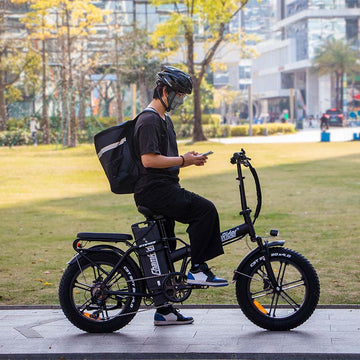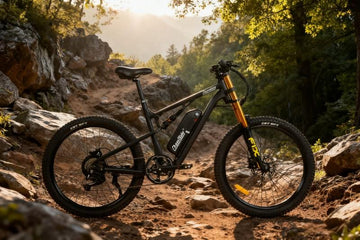The rise of on-demand food delivery services across Europe has created a dynamic yet challenging work environment for riders. European food delivery riders are the backbone of these services, ensuring that meals reach customers quickly and safely. However, their daily work is far from simple. From navigating urban traffic to managing tight schedules and maintaining their bikes, these riders face a range of challenges that can impact efficiency, safety, and earnings.
This article explores the key challenges encountered by food delivery riders Europe, offering insights into their daily experiences and the solutions that can help improve working conditions for these essential urban workers.
1. Navigating Congested Urban Traffic
One of the most immediate and visible challenges for delivery bike riders Europe is dealing with congested city streets. Many riders rely on bicycles or electric bikes to weave through traffic, but heavy congestion can lead to:
-
Delays in deliveries
-
Increased risk of accidents
-
Higher stress levels
European cities like Paris, London, and Milan have narrow streets and busy intersections, making navigation even more demanding. Riders must constantly balance speed with safety, especially during peak hours when urban traffic density is at its highest.

2. Harsh Weather Conditions
Unlike indoor jobs, European courier riders face the elements daily. Rain, snow, and extreme temperatures can make deliveries difficult and hazardous:
-
Slippery roads increase the risk of accidents
-
Cold temperatures can reduce the efficiency of electric bike batteries
-
Wet conditions can damage delivery packages
Riders need appropriate weather gear and maintenance tools for their bikes to mitigate these challenges. For example, waterproof clothing, insulated gloves, and proper bike tires are essential for maintaining safety and performance.
3. Tight Delivery Windows
Food delivery is a time-sensitive industry. Food delivery riders Europe are often under pressure to meet strict delivery deadlines. This can result in:
-
Increased stress and fatigue
-
Risky riding behavior in traffic
-
Difficulty maintaining a high-quality service
Companies are increasingly implementing route optimization software and delivery tracking systems to support riders, but the pressure to maintain speed and efficiency remains a core challenge.

4. Physical Demands and Health Risks
The job of a European food delivery rider is physically demanding. Long hours on a bike or electric scooter can lead to:
-
Muscle fatigue and joint strain
-
Repetitive motion injuries
-
Back and neck pain
For delivery bike riders Europe, proper ergonomics, regular breaks, and exercises to strengthen core muscles are critical for maintaining long-term health and performance.
5. Economic Pressures
Many European courier riders work as independent contractors rather than employees. This employment model comes with financial uncertainty:
-
Earnings fluctuate depending on demand and hours worked
-
Costs for bike maintenance, fuel, or electric bike charging are often out-of-pocket
-
Limited access to benefits like healthcare and insurance
Understanding how to optimize work hours, maintain bikes efficiently, and manage expenses is essential for riders seeking to maximize income while minimizing risks.
6. Safety Concerns
Safety remains a significant concern for food delivery riders Europe. Riding in urban environments exposes them to:
-
Traffic accidents involving cars, motorcycles, and pedestrians
-
Theft of bikes or delivery packages
-
Assaults or harassment in high-density areas
Protective gear such as helmets, reflective clothing, and bike locks, combined with awareness training, can mitigate risks. Some cities are also improving bike lane infrastructure to enhance rider safety.

7. Bike Maintenance and Technical Challenges
A well-maintained bike is crucial for efficiency. Delivery bike riders Europe often face technical challenges such as:
-
Battery degradation in electric bikes
-
Flat tires or brake issues
-
Mechanical failures during deliveries
Riders need to learn basic maintenance skills and have access to replacement parts or spare batteries to ensure they can complete their routes without interruptions.
8. Regulatory and Legal Challenges
Different European countries have varying rules regarding courier work, bike usage, and traffic regulations. European courier riders must navigate these complexities:
-
Licensing and registration requirements for electric bikes or scooters
-
Compliance with local traffic laws
-
Understanding labor rights and contractor regulations
Companies and riders alike must stay informed to avoid fines and ensure legal compliance.
9. The Psychological Strain
Beyond physical and economic challenges, food delivery riders Europe also face psychological pressures:
-
Meeting customer expectations
-
Coping with unpredictable traffic and weather
-
Balancing multiple deliveries at once
High stress can affect decision-making and safety, making mental health support and stress management strategies important for long-term sustainability in this job.
10. Technological Adaptation
Modern delivery relies heavily on technology. European courier riders are expected to use:
-
Delivery apps for route management and tracking
-
GPS navigation tools
-
Communication platforms with restaurants and customers
Technical issues or app glitches can disrupt delivery schedules and affect earnings, requiring riders to quickly adapt and troubleshoot digital tools.
Summary
The daily life of European food delivery riders is filled with a combination of physical, economic, environmental, and psychological challenges. Delivery bike riders Europe and European courier riders must navigate congested streets, harsh weather, tight deadlines, and complex regulations, all while maintaining safety and service quality.
Addressing these challenges requires a combination of proper training, safety gear, bike maintenance, and support from delivery platforms. For policymakers and companies, understanding the realities of food delivery riders Europe is essential to improve working conditions, promote rider safety, and ensure the sustainability of urban food delivery services.
By acknowledging and mitigating these daily challenges, European food delivery riders can continue to play a vital role in the growing urban logistics ecosystem while maintaining health, safety, and economic stability.





